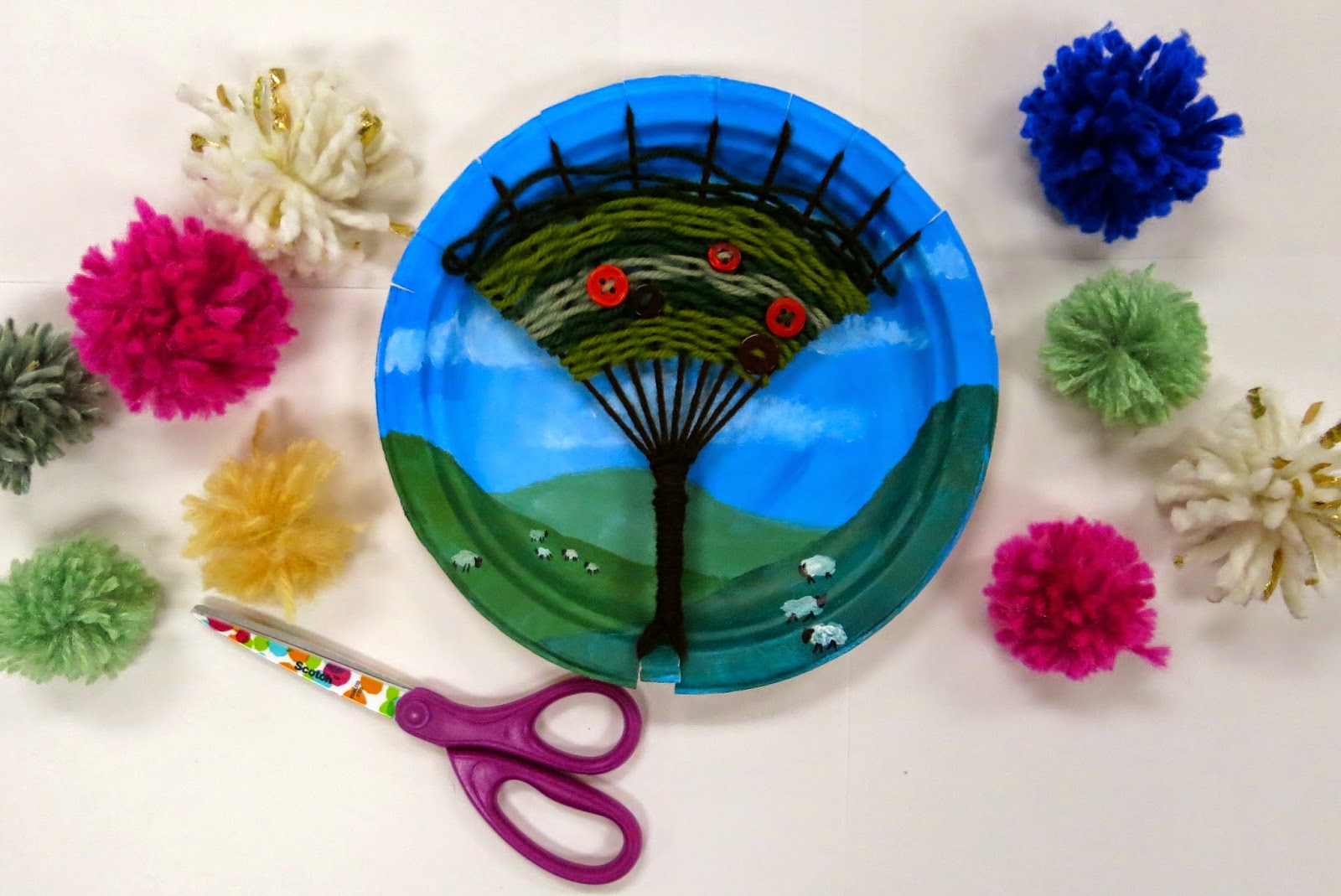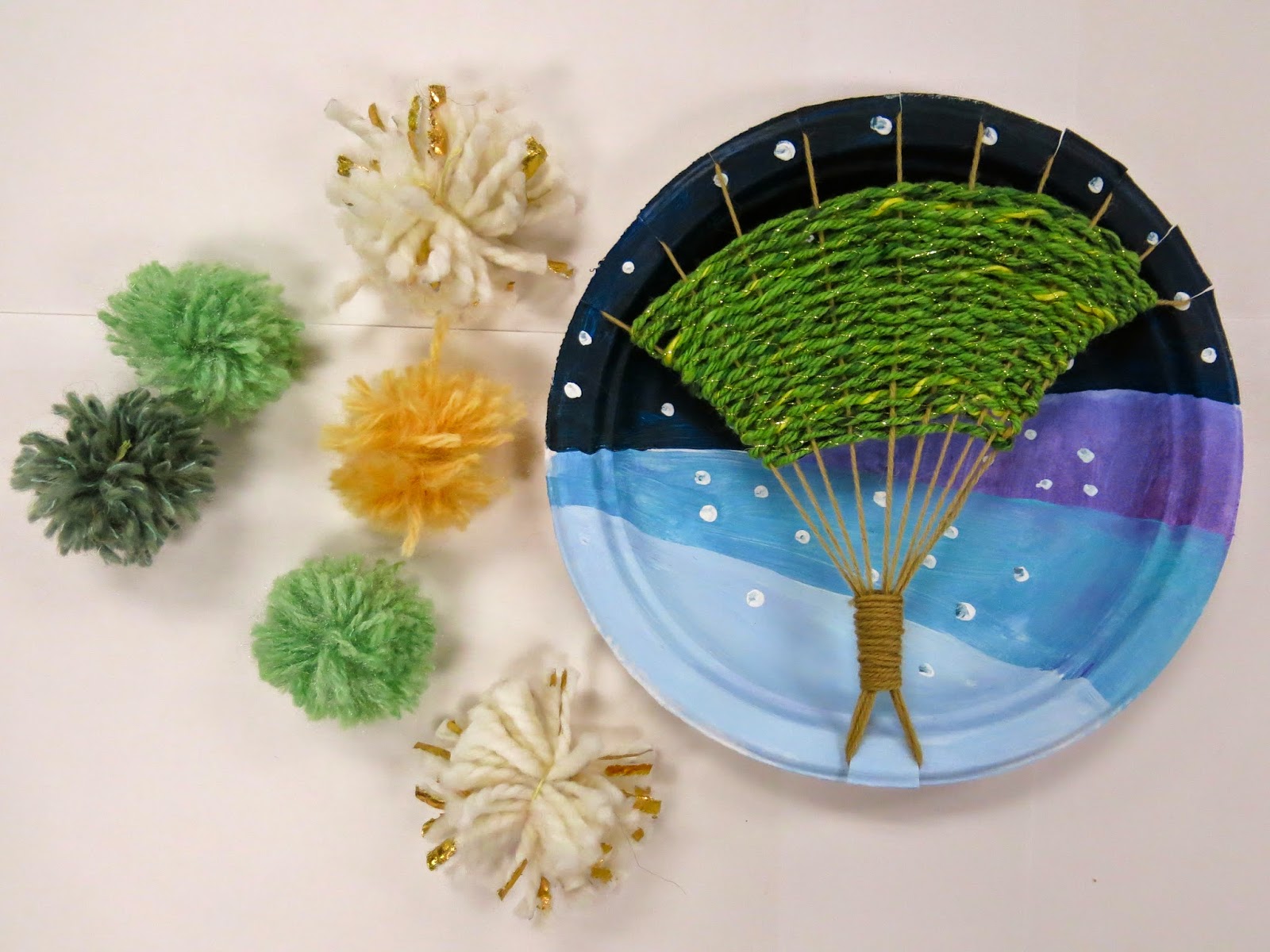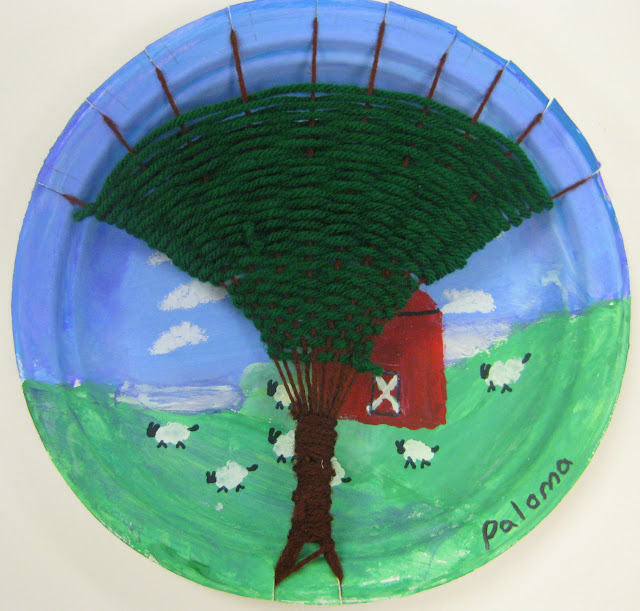I'll never forget my first year teaching. It was: wonderful, traumatizing, exciting, nerve-wracking and, most of all, a HUGE learning curve! I'll never forget seeing "weaving" in my first grade curriculum and breaking into a sweat. I'd gotten a C in fibers in college (which is so funny as fibers are my favorite thing!) BECAUSE OF MY WEAVING! When warping that big ole loom, I missed a couple of warps. Instead of going back and fixing my mistake, I thought, "eh, that professor will never notice." Little did I know that it'd leave a huge run all the way down the length of my weaving that seemed to scream, "THIS SLACKER DESERVES A C!" And a C I got.
I remember introducing weaving to my first graders that year and a boy named Jonathan shouted out, "Weaving's for GIRLS and I ain't doing it!" It was then that I realized I had to make weaving (and teaching in general) fun, silly, wacky and engaging. For all my learners, boys and girls. The thing is, he turned out to be my best weaving and biggest fan of the medium. As most boys do!
Introducing kids to weaving is something that I've been doing now for 18 years...and this lesson hasn't changed all that much. I read the same book, show them how to make a loom on the first day and we weave on the next. I know so many teachers struggle with weaving. The key is, introducing them to weaving with a simple paper weaving. Once they understand the concept, they'll take off like a weavin' rocket ship.
I thought I'd record my two thirty minute classes. Here's what we did on the very first day: creating our looms!
This here is my FAVORITE book on weaving and the kids absolutely love it! After we create our looms, we sign them and await the following day's weaving adventure:
If you'd like more info on paper weaving, you might enjoy this video. It will explain the process more:
I'll keep you posted on just what we are doing with our weavings...I'm really excited and cannot wait to share. I have a TON of weaving projects both on my YouTube channel (just search my Fibers playlist) and right here on my blog. Happy Weaving!

Read more »
I remember introducing weaving to my first graders that year and a boy named Jonathan shouted out, "Weaving's for GIRLS and I ain't doing it!" It was then that I realized I had to make weaving (and teaching in general) fun, silly, wacky and engaging. For all my learners, boys and girls. The thing is, he turned out to be my best weaving and biggest fan of the medium. As most boys do!
Introducing kids to weaving is something that I've been doing now for 18 years...and this lesson hasn't changed all that much. I read the same book, show them how to make a loom on the first day and we weave on the next. I know so many teachers struggle with weaving. The key is, introducing them to weaving with a simple paper weaving. Once they understand the concept, they'll take off like a weavin' rocket ship.
I thought I'd record my two thirty minute classes. Here's what we did on the very first day: creating our looms!
Here are some must-have visuals that I always use: thrift store weavings and looms; my GIANT paper loom made from laminated paper; my Goat in the Rug book.
I also love having the roving for the kids to see and touch. Normally, I'll pass it around but I had forgotten to check with the nurse for allergies so I held off on this day.This here is my FAVORITE book on weaving and the kids absolutely love it! After we create our looms, we sign them and await the following day's weaving adventure:
Here's how we went about cutting our looms and how I explained it...
I'll keep you posted on just what we are doing with our weavings...I'm really excited and cannot wait to share. I have a TON of weaving projects both on my YouTube channel (just search my Fibers playlist) and right here on my blog. Happy Weaving!








































































